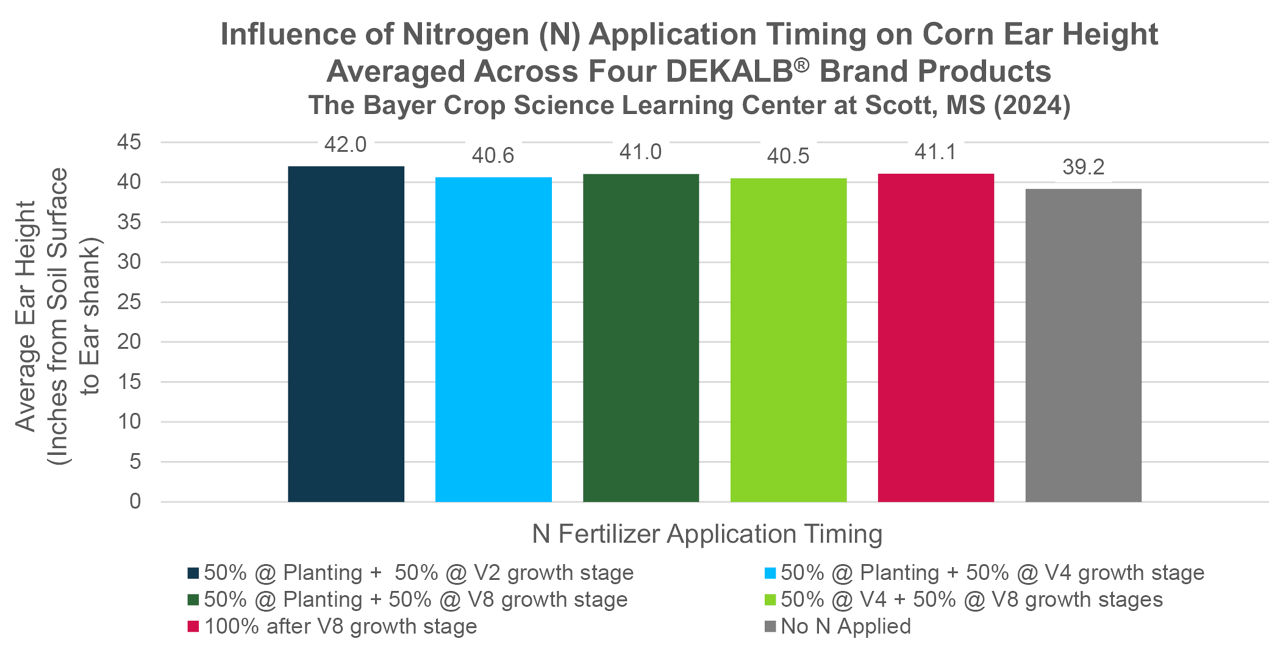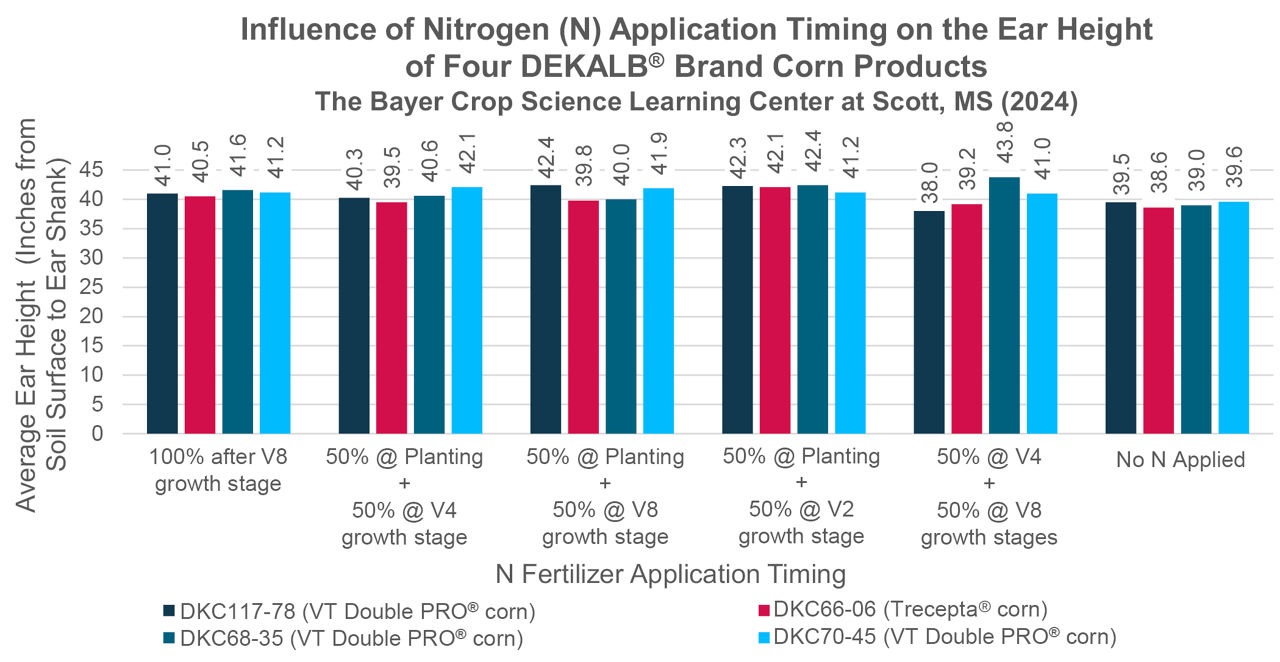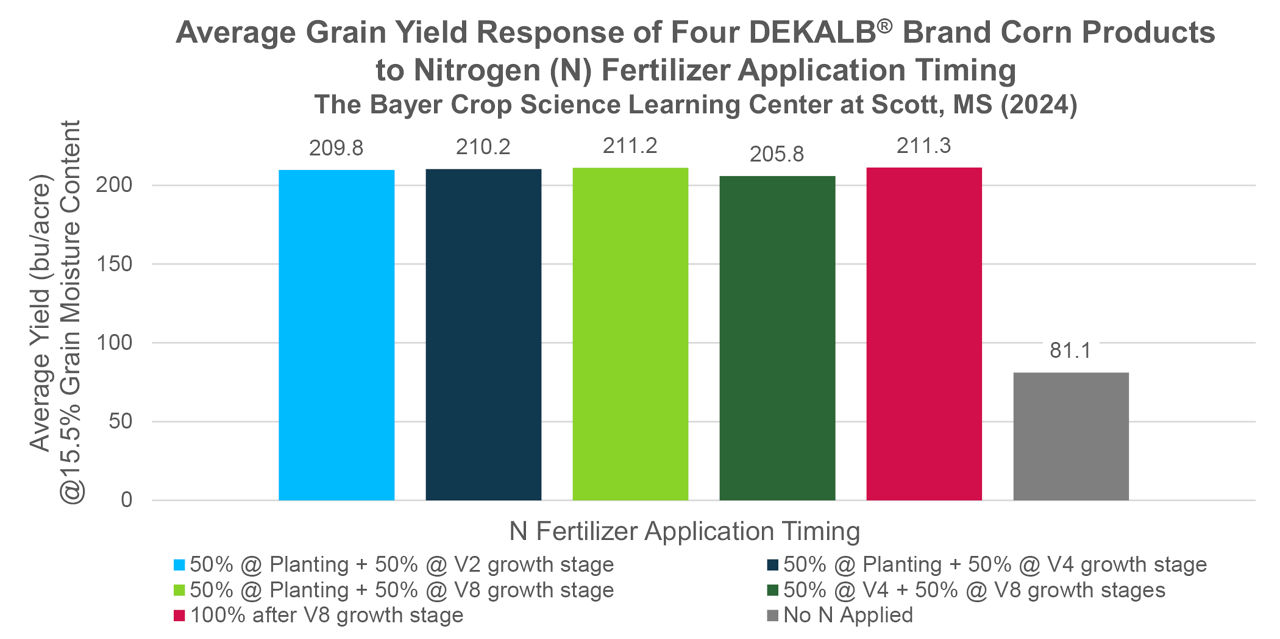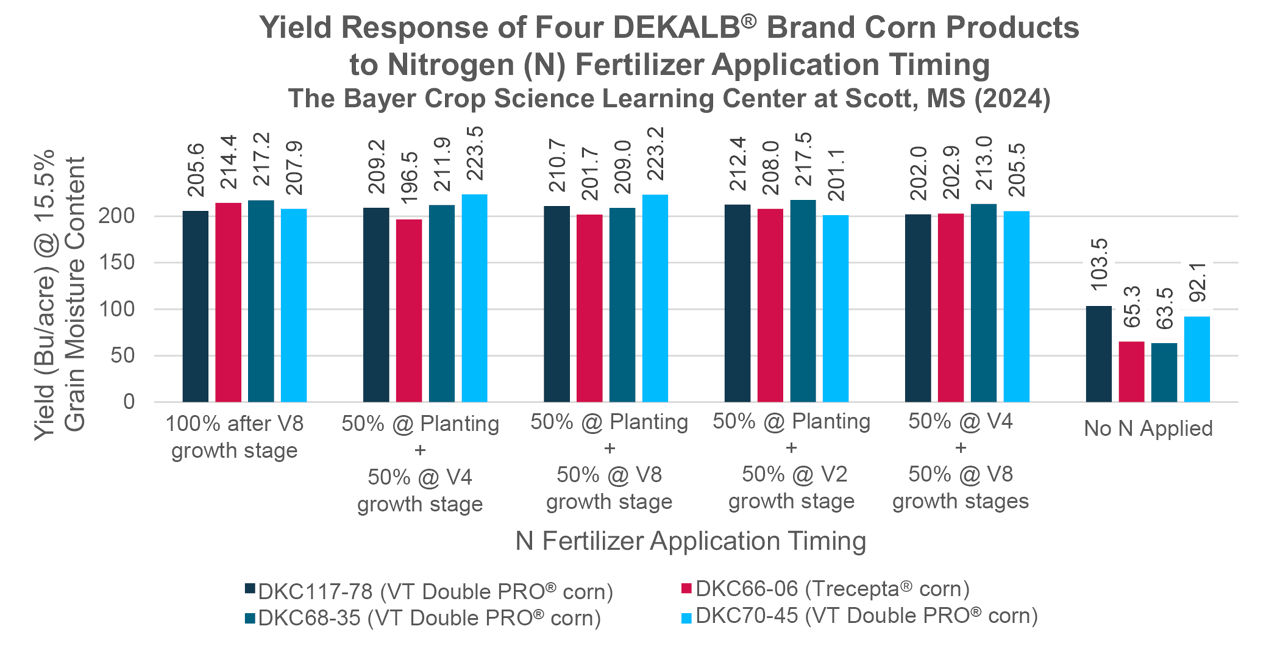Influence of Nitrogen Fertilizer Application Timing on Grain Yield and Ear Height of Four DEKALB® Brand Corn Products
December 13, 2024
TRIAL OBJECTIVE
- Applying nitrogen (N) is essential in any mid-Southern corn production system.
- Weather events can delay fertilizer application during the spring season. Questions often arise about the optimal timing of N applications and the potential impact that delays might have on:
- Yield potential
- Plant morphology, including ear height
- One primary, related question – Do large amounts of N fertilizer applied early increase ear height and thereby the incidence of lodging?
- This experiment was meant to help answer some of these questions.
RESEARCH SITE DETAILS

- This trial was conducted during a “typical” season with moderate early and mid-season conditions.
- Experimental design was a single-replicate strip trial.
- Plot size was 12 rows (30 feet) by 140 feet equaling 0.12 acre per plot.
- Nitrogen (N) fertilizer application timings:
- 50% @ planting + 50% @ V2 growth stage
- 50% @ planting + 50% @ V4 growth stage
- 50% @ planting + 50% @ V8 growth stage
- 50% @ V4 + 50% @ V8 growth stages
- 100% after V8 growth stage
- No N applied (untreated control)

- All other field operations including tillage and herbicide applications were per local standards.
- All fertilizer applied had an analysis of 30-0-0-2.5.
- Fertilizer was injected into the soil by an applicator equipped with fertilizer knives.
- Ear height (inches) was measured from the soil surface to the ear shank.
- The trial was machine harvested for yield data and results corrected to 15.5% grain moisture content.
UNDERSTANDING THE RESULTS
- Averaged across the four seed products, nitrogen (N) application timing resulted in ear height increases of 2 to 3 inches compared to no applied N (Figure 1).

- Only small differences were measured for ear height across each seed product and N application timings (Figure 2).

- The average yield response to N application timing (compared to no applied N, Figure 3) was about 130 bu/acre.

- Yield differences were observed for each seed product across the various N application timings (Figure 4).

KEY LEARNINGS
Considerations:
- This trial was conducted at the Bayer Crop Science Learning Center near Scott, MS with relatively good soil fertility, and with tillage and crop rotation programs in place. Results could vary depending on year, location, growing conditions, and farming practices.
- While the data from 2024 at this location is inconclusive as to the effects of nitrogen application timing on grain yield and ear height, intentional application delays should be avoided if possible. The later the application timing, the more likely fertility-related yield penalties are to occur. Fertilizer may not be incorporated or available due to drought and, at some point, later applications may become difficult in advanced crop growth stages.
- The data suggest that some delays can be tolerated but good crop management and timing remains essential for optimal outcomes.
- Please contact your local DEKALB® brand representative for more information.
1213_474133